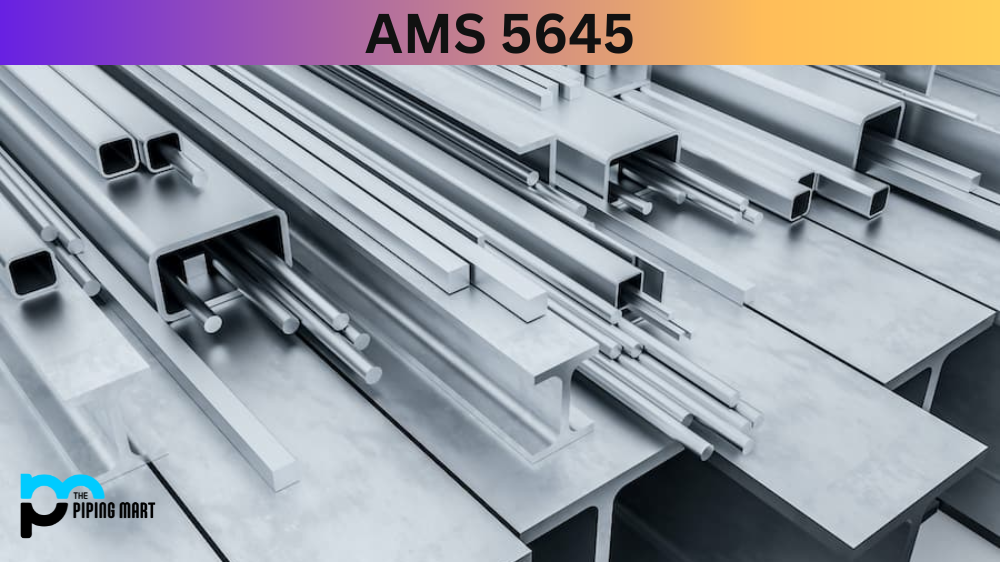Metals and alloys have become integral to modern-day engineering, and aluminium is one of the most commonly used metals in various applications. One of the aluminium alloys that have recently gained popularity is 2117 aluminium. This alloy offers exceptional mechanical and physical properties, making it a preferred choice in many industries. In this article, we dive deep and explore the properties, uses, and some critical aspects of 2117 aluminium.
2117 Aluminum Composition
2117 aluminium is an aluminium-copper alloy that comprises 4% copper and a lesser amount of magnesium, manganese, and iron. This alloy can be produced in various forms, including bars, sheets, plates, forgings, and extrusions.
| Element | Content (%) |
|---|---|
| Aluminum, Al | 94.3 – 97.6 |
| Copper, Cu | 2.2 – 3 |
| Silicon, Si | ≤ 0.80 |
| Iron, Fe | ≤ 0.70 |
| Zinc, Zn | ≤ 0.25 |
| Magnesium, Mg | 0.20 – 0.50 |
| Manganese, Mn | ≤ 0.20 |
| Chromium, Cr | ≤ 0.10 |
| Other (each) | ≤ 0.050 |
| Other (total) | ≤ 0.15 |
2117 Aluminum Mechanical Properties
One key feature that makes the 2117 aluminium stand out is its incredible tensile strength, about 500 MPa. Moreover, the alloy demonstrates improved elongation and toughness, making it perfect for high-stress applications. 2117 Aluminium can also withstand varying temperature changes, and its mechanical properties remain stable even in elevated temperatures.
| Properties | Metric | Imperial |
|---|---|---|
| Tensile strength | 296 MPa | 43000 psi |
| Yield strength | 165 MPa | 24000 psi |
| Elongation at break (@diameter 12.7 mm/0.500 in) | 27% | 27% |
| Poisson’s ratio | 0.33 | 0.33 |
| Elastic modulus | 71 GPa | 10300 ksi |
| Shear strength | 193 MPa | 28000 psi |
| Hardness, Brinell (@load 500 kg; thickness 10.0 mm) | 70 | 70 |
| Hardness, Knoop (converted from Brinell hardness value) | 93 | 93 |
| Hardness, Vickers (converted from Brinell hardness value) | 81 | 81 |
| Machinability | 50 | 50 |
2117 Aluminum Physical Properties
Apart from outstanding mechanical properties, 2117 aluminium exhibits excellent physical characteristics such as low density, high melting point, and thermal conductivity. It has a thickness of 2.83 kg/m3, a melting end of 530°C, and thermal conductivity of 121 W/m.K.
| Properties | Metric | Imperial |
|---|---|---|
| Density | 2.75 g/cm³ | 0.0994 lb/in³ |
| Melting point | 554 – 649°C | 1030 – 1200°F |
2117Aluminum Equivalent
- AMS 7222
- ASTM B316
- QQ A-430
- SAE J454
2117 Aluminum Uses
2117 Aluminium is commonly used in aerospace, automotive, marine, and defence industries due to its outstanding mechanical and physical properties. It is used for aircraft sheet and plate applications that require high strength and low density, such as manufacturing fuselage skins, wing skins, and bulkheads. The alloy also produces automotive wheels and suspension components due to its excellent enforceability and high corrosion resistance.
2117 Aluminum Corrosion Resistance
2117 aluminium is known for its improved corrosion resistance compared to other aluminium alloys. The presence of copper in the alloy enhances corrosion resistance by forming a protective oxide layer that prevents the spread of corrosion. The alloy can be used in corrosive environments, including marine and saltwater exposure.
2117 Aluminum Heat Treatment
Heat treatment of 2117 aluminium improves its strength, ductility, and toughness; thus, it is commonly treated to produce desired mechanical properties. The alloy can be heat-treated using a solution heat treatment process, which involves heating the material above its recrystallization temperature, followed by quenching.
2117 Aluminum Machining
Machining of 2117 aluminium is relatively easy and can be done using conventional mechanical methods. The alloy has good chip-breaking properties due to its ductility, toughness, and good resistance to galling and wear.
2117 Aluminum Welding
2117 aluminium can be welded using various methods, including TIG, MIG, or Oxyacetylene welding. TIG welding is the most commonly used method for welding this alloy due to its high strength and toughness.
Conclusion
2117 aluminium is an excellent choice for applications that require strength, low density, and excellent corrosion resistance. Its improved physical and mechanical properties make it an ideal material for use in the aerospace, automotive, marine, and defence industries. This article taught us about 2117 aluminium’s composition, physical and mechanical properties, uses, and critical aspects such as corrosion resistance, heat treatment, machining, and welding. Understanding these aspects is crucial for making informed decisions when choosing materials for specific applications.

A passionate metal industry expert and blogger. With over 5 years of experience in the field, Palak brings a wealth of knowledge and insight to her writing. Whether discussing the latest trends in the metal industry or sharing tips, she is dedicated to helping others succeed in the metal industry.




